IT band stretching and rolling won’t relieve the tension
4As a yoga therapist I create practices for students who are very physically active, students who are sedentary and everything in between. Students at both ends of the activity spectrum challenge and sometimes abuse their bodies in different ways. Next week we will talk about what prolonged sitting does to you, but this week we will focus on something that mostly plagues the active folks – iliotibial band issues.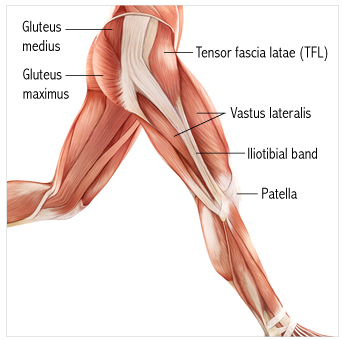
The Iliotibial (IT) band is a thick band of fascia that runs on the side of your leg from the hip to just below the knee. If you are an active individual who runs or plays sports (or if you are working with one), at some point you’ve probably experienced some tightness on the side of your leg or full-blown lateral knee pain (called ITB syndrome). Two common solutions that are recommended for the IT band tightness are IT band stretching and IT band rolling (applying pressure over the foam roller). Yet neither of these might be a good solution for you. Why is that?
First, let’s figure out why the IT band gets tight on the first place. If you look at the anatomical structure of the area, you will see that the IT band is intimately linked to the tendons of two muscles – Gluteus maximus and Tensor fasciae latae (TFL). In fact, some folks go as far as to call the IT band an “extended tendon” of the TFL. What it basically means is that whatever is happening in the TFL will affect the IT band, since when the TFL contracts, it pulls on the IT band.
TFL has several important jobs to do. It helps Psoas with hip flexion and it helps Gluteus medius with abduction and internal rotation of the leg, as well as pelvis stabilization during walking. Now the common problem for active and sedentary folks alike is the weakness in the Gluteus medius muscle. If that’s the case, then Gluteus medius will not contract properly when needed and will not stabilize the hip while running and walking, leaving it up to the TFL to pick up the slack – which it does by tightening up and pulling on the IT band. So the IT band becomes stressed from this constant pull and you get a sensation of a tight rope on the side of your leg. Tight IT band can affect your knee “tracking” (the direction in which the kneecap is facing), which, it turn, can mess up the entire alignment of the hip, knee and ankle relationship (and can show up as knee or hip pain).
So your overworked TFL already pulls strongly on your IT band and then you come in and start to pull on the IT band some more because you were told that stretching it helps release the tension. We forget sometimes that IT band is not a muscle, therefore it does not contract and stretch the way the muscle does. It is not elastic, it’s plastic, meaning that if you overstretch it, it will not bounce back to it’s original shape, but will remain this length. Overstretching the connective tissue is never a good idea, since it plays an important role in stabilizing the structure (IT band is a strong stabilizing component of the hip and knee). And even if you manage to stretch the lateral structures of your hip, the underlying problem of the weak Gluteus medius will still remain.
The good news is that whatever stretches you were doing for the IT band were probably primarily stretching your TFL anyway. All you need to do is shift your focus and instead of thinking about lengthening the side of the leg, think of contracting and stretching the TFL to release chronic tension there. And on top of that you’d probably benefit from abductor strengthening to address the root of the problem. Certainly, your abductors may not be the only issue. More complex compensation patterns will require further exploration.
 What about the foam roller? Well, if your IT band feels tight and you roll directly over it, it is very painful. We like to interpret it as “no pain, no gain”, but it might actually indicate an inflammation in the area that you can irritate even more by crushing it with the roller. Another interesting prospective from a massage therapist stresses that by rolling directly over your IT band you squish it into the underlying Vastus lateralis muscle, while what your are looking to do is directly the opposite – you’d want to break up the adhesions between the IT band and underlying tissue to “free it up”, so to speak. So from this standpoint you might be better off seeing a massage therapist with good knowledge of anatomy who can do that for you, or you can follow the suggestions above to strengthen and release tension in the surrounding musculature. If you do want to use the foam roller, you will be better off rolling on the surrounding muscles with the same purpose of releasing tension there.
What about the foam roller? Well, if your IT band feels tight and you roll directly over it, it is very painful. We like to interpret it as “no pain, no gain”, but it might actually indicate an inflammation in the area that you can irritate even more by crushing it with the roller. Another interesting prospective from a massage therapist stresses that by rolling directly over your IT band you squish it into the underlying Vastus lateralis muscle, while what your are looking to do is directly the opposite – you’d want to break up the adhesions between the IT band and underlying tissue to “free it up”, so to speak. So from this standpoint you might be better off seeing a massage therapist with good knowledge of anatomy who can do that for you, or you can follow the suggestions above to strengthen and release tension in the surrounding musculature. If you do want to use the foam roller, you will be better off rolling on the surrounding muscles with the same purpose of releasing tension there.

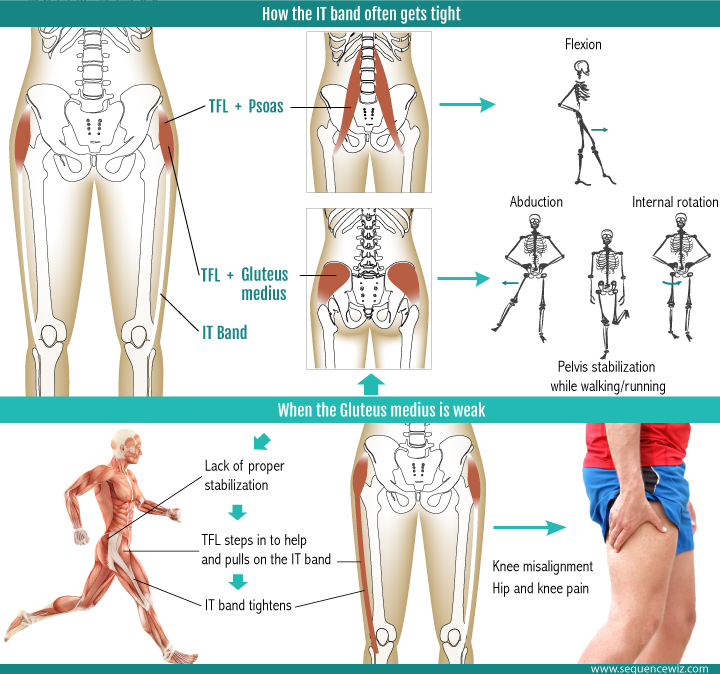
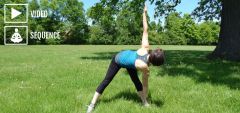
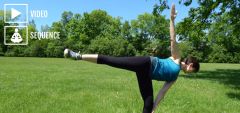
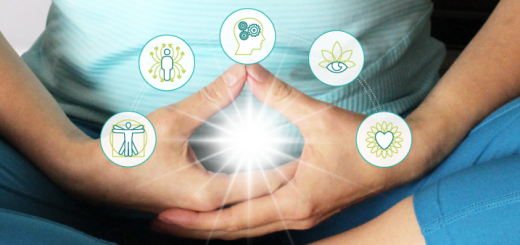
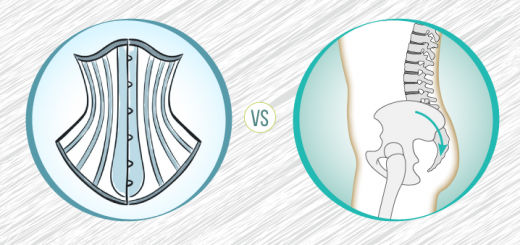

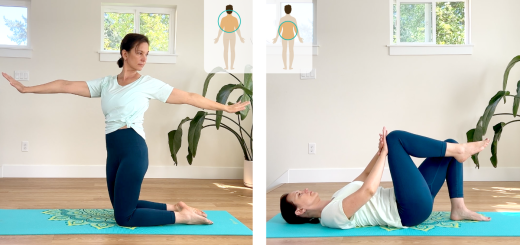















Thank you so much for a wonderfully written article! I have been working on the same with our students, stretching is overrated, in my opinion. I even developed a new series called Ono yoga to strengthen and stabilze the joints. It’s nice to know I’m not alone.:) Thanks for your posts and fabulous infographics.
Thank you Ame! I agree – stretching is overrated 🙂 Let’s keep spreading the word…
After years of strength training and some HIIT I decided to pursue yoga. Have tried before but quickly lost interest because it is HARD – and the whole breathing thing does not come naturally to me.
So now I’m really on a quest to be a yoga queen and, again, I’m finding it very, very hard. I now have books, DVDs, online instruction, etc, etc. The poses are hard. I can’t believe I don’t have flexibility. I am kinda small framed though not petite and surely not overweight.
After two weeks of yoga (at home) and switching up to the next level routine I am tight and I have discomfort in my lower back (which rears its ugly head when I stand from a sitting position, otherwise ok) and I think it’s my gluteus medius. I have foam rollers that I have never really used so I pulled those out and rolled around on them the day before yesterday and followed an online stretching workout. Yesterday I was in so much discomfort. After ibuprofen today is better but I still get a spasm when I go from sitting to standing. Otherwise I’m ok.
My question, WHAT STRETCHES SHOULD I DO TO ALLEVIATE THIS? And any advice about what yoga regimen to follow??
HELP! I REALLY want to do this!
Thank you for this article. I’ve read similar explanations, and the logic makes sense. What gets me is that I’ve been rolling my IT band on a very firm, nubby foam roller, followed by stretching for over a year, and while this ritual was painful at first, my IT band (and knee) feels much better now. So, are foam rolling and stretching the IT band harmful even though they give me relief and mobility?